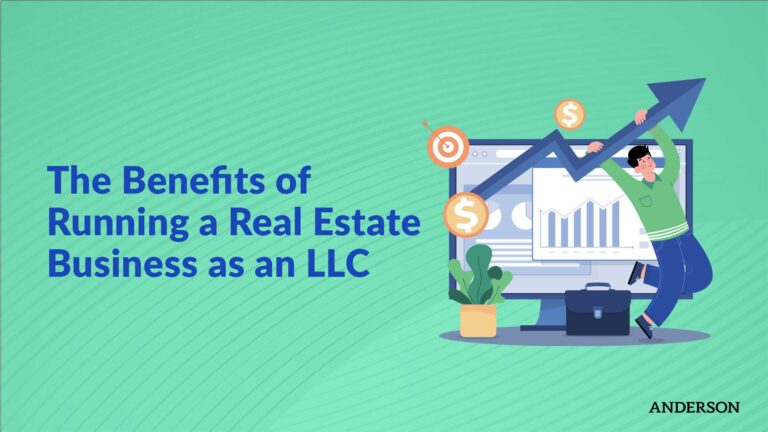Pros and Cons of Mezzanine Financing
PROS:
- Cheaper than Raising Equity
- Long Term
- No Collateral Required
CONS:
- Higher Interest Rates
- Warrants/Equity Requirements
- Subordinate to Other Debts
If you’re wondering where the word mezzanine comes from, it’s an architectural term for a secondary floor that is often open to the ground floor below (think of the balcony in a shopping mall). The term is rather fitting for this type of loan structure, because mezzanine loans are a sort of hybrid between debt and equity financing.
Debt financing involves providing money in return for interest. This is the most common form of financing arrangement between financial institutions and consumers, and pretty much every small business. The lender provides cash, and in return they will get their cash back, plus interest, usually along the lines of a repayment schedule. Debt financing almost always involves a piece of collateral that the borrower is willing to part with if they default on the loan, and the lender will collect this asset to recoup their losses.
Equity financing is different. In equity financing, the lender does not stand to collect any interest for the money they loan, or even to get the loan back, for that matter. Rather, they get a slice of the pie via ownership in the company. That, of course, means that (if everything goes according to plan) they will get the amount of money they loaned back, plus more on a perpetual ongoing basis, until the company dissolves or is sold to another entity. Collateral is not typically involved in equity financing because the lender is going to take part ownership of the company already.
What is Mezzanine Financing?
Mezzanine financing is a sort of hybrid combo between debt and equity financing. The lender will provide capital and collect interest, but in the result of a default by the borrower, they may exercise their warrant to obtain an equity stake in the company (that is, partial ownership).
Mezzanine debt is often used to bridge the gap between outstanding debt financing and the amount of money needed to expand the business or finance a new project. For this reason, mezzanine loans are often used for expanding a company’s operations, instead of seed money in the early financing or startup stages. It is, however, a fairly common method of funding a growing, yet already established company that has proven cash flow and is looking to take their operations to the next level. Such a company may not be big enough to pursue sizable corporate loans. Thankfully, they can rely on a mezzanine lender.
Pros of Mezzanine Financing
There are many reasons an entrepreneur may choose to pursue a mezzanine financing option, including:
1. Cheaper than Raising Equity
Raising equity here refers to increasing the number of shares of common stock offered by a given company if it is publicly traded, increasing the number of shares. This is referred to as raising seasoned equity or a seasoned equity offering (SEO), in contradistinction to an IPO (initial public offering).
An SEO can cost around 7% of the proceeds, which can be a hefty sum of money, especially for a younger company looking to get to the next level. Mezzanine financing offers an attractive option that can be less expensive to finance than putting more shares of stock into the market in order to raise money.
Want to learn more about stock equity offerings and IPOs? Join our Infinity Investing Workshop! Our experts will teach you how to build long-term wealth using stock investing strategies that work—giving you more money to invest in your business and retirement.
2. Long Term
Mezzanine loans are a very flexible arrangement that is not tied to any type of amortization or timetable. Of course, one reason that Mezzanine loans can become a long-term arrangement is that the lender will most likely be getting a share of equity in the company, which means they will be sticking around, perhaps as a part of the ownership circle and/or the management team. In fact, mezzanine financing is very often used to facilitate internal ownership changes at a company with management buyouts.
3. No Collateral Required
Mezzanine loans do not require collateral, which is a major benefit for the borrower. If they default on the loan, they will still have to turn over a share of the business. However, most mezzanine loan arrangements will have a transfer of equity built into the arrangement anyway.
All that to say, mezzanine financing does still involve some sort of collateral; it just isn’t a tangible asset, which is certainly a benefit for the borrower.

Cons of Mezzanine Financing
As with any sort of financing arrangement, there are a few drawbacks. When it comes to mezzanine financing, these cons include:
1. Higher Interest Rates
Mezzanine loans are considered risker than traditional debt financing, and in terms of repayment structures, they can be subordinate to other types of debt, which is why they are also referred to as subordinate loans.
This means that the lender is going to mitigate their risk by charging higher interest rates. In fact, mezzanine loans often carry interest rates between 20-30%—that’s much steeper than the 2-13% traditional banks usually charge for business loans. But again, mezzanine loans are often a matter of necessity in the face of no available traditional debt financing.
2. Warrants and Equity Requirements
A mezzanine lender is probably going to become an equity shareholder in the company, whether that means owning a controlling share of stocks or sitting on the board of directors with a corporate vote. This means that mezzanine loans sometimes have very restrictive terms built into the agreement. In some cases, a business must agree to avoid offering compensation packages above those that are typical in the market. Sometimes executives will even need to take an elective pay cut in order to secure financing from a mezzanine lender. The lender can also have some say in how the money will be spent, and what it can be used for.
Then of course, there are the warrants, which allow the lender to exercise their preferred equity rights and take the share of ownership that has been agreed upon. Of course, these are all part of the expectations at the outset of mezzanine financing.
3. Subordinate to Other Debts
Mezzanine financing is subordinate to other types of debt, especially debt that is already in place. Senior debt holders will recoup their losses first if the company dissolves because assets will be liquidated to settle these debts. If this happens, and there is nothing left for the mezzanine lender, they will have to walk away from the arrangement as a failed opportunity.
This is why a mezzanine lender will do their due diligence to analyze the fundamental health of a company before discussing this type of potential equity investment. In a way, mezzanine financing is similar to the difference between preferred and common stock. Though common stock has certain benefits over preferred stock (such as corporate voting rights), preferred stock is more secure in the event of corporate dissolution because preferred stockholders will get paid when the company liquidates assets. The same is not true of mezzanine financiers; they are behind a senior lender.
How Risky is Mezzanine Financing?
Equity lenders are behind lien-secured mortgage creditors in terms of getting repaid, which can present a significant risk. Since there is no collateral involved, mezzanine investors may also lose out if the business itself goes under. This is why mezzanine lenders are not as concerned with creditworthiness as they are with the cash flow of a business and its fundamentals, such as who is running the business and the turnover rate of its employees, executives, and customers.
That said, there are plenty of situations that call for mezzanine financing, such as when a company needs more capital and already has outstanding loans; they just need a little boost to close to the gap between what they need and what they have.
Mezzanine lenders tend to be very savvy about what they are doing. They are not hard money lenders looking to make a quick entry and exit. Rather, they are looking for a long-term arrangement that will result in a profitable share of equity in a healthy and growing company.
Where and When is Mezzanine Financing Used?
As mentioned, mezzanine transactions are a way to obtain growth capital, often for middle market companies (that is, companies beyond the startup stage but that are still growing). Really, mezzanine finance can occur in any kind of industry, from commercial real estate to software. A mezzanine financing provider looks for a business owner who is willing to part with equity interest in return for cash they can use to grow their business.
But mezzanine funding has a diverse range of other uses as well, including acquisition financing. That is, when a company is not just looking to grow, but to acquire a competitor. In the world of corporate finance, this is just one of the many ways that a private equity firm can provide mezzanine capital as a more attractive option than a conventional business loan from a financial institution. This type of subordinated debt is popular for use in leveraged buyouts, where a company will essentially make an acquisition using debt. Mezzanine debt is an attractive option for the growing company because the terms are often negotiable. For instance, the interest rates can be deferred, which frees up cash to facilitate the transition. Moreover, the interest payments can become a tax write off, which is also attractive.
Mezzanine funding can also be used to facilitate an internal change within a company. For example, the management team of a company may use mezzanine funding to buy out the current owners or the private equity fund that got the company going in the first place. This changing of the guard does not have to fall into the category of a hostile takeover. However, without the use of a mezzanine fund, the management team may not have the wherewithal to perform the buyout.
It should be noted that while mezzanine funding can be used in any industry, provided the right mix of factors is present, it is very commonly used in the hotel industry. This is because hotel chains operate both in terms of a real estate investment and as a consumer-facing business. They may need working capital to build new hotels or acquire a rival chain, and mezzanine financing from a group of interested investors who want an equity stake in the business may be easier to get than a conventional loan, in addition to the beneficial tax implications that mezzanine financing offers.
Mezzanine Financing is a Hybrid Between Debt Financing and Equity Financing
Mezzanine financing is a very complex topic, and while it will most likely not be used by most small businesses, it’s still a good option to know about in case your business reaches the point of needing to close the gap between funding you can get and the amount of money you need to grow. It’s often used by mid-sized companies to close the gap between debt financing and equity financing.
You can learn more about creative financing options by joining the Anderson Funding Community. As a member, you’ll gain access to our network of experts who will prepare your business for real estate and business funding opportunities. Not only will you receive a list of active lenders looking for investment opportunities, but we’ll also help you establish a business credit history and gather the proper financial documents you’ll need to attract investors. It’s a great way to grow your business while ensuring you have all the proper paperwork in place to take full advantage of any opportunities that arise.
As always, take advantage of our free educational content and every other Tuesday we have Toby’s Tax Tuesday, a great educational series. Our Structure Implementation Series answers your questions about how to structure your business entities to protect you and your assets.
Additional Resources:
- Claim your FREE Strategy Session
- Join our next Tax & Asset Protection event to learn more advanced tax minimization & entity structuring strategies
- For all things investing, check out the Infinity Investing YouTube channel
- Subscribe to our YouTube channel to make sure you never miss the latest strategies & updates
Bonus Video
Free Strategy Session with an Anderson Advisor
Receive a detailed risk assessment to assist in lowering problem areas that could wipe out all of your assets with one wrong move. Speak with an Anderson Professional Advisor to get your FREE Strategy Session.
Limited-Time Offer: ($750 value.)











